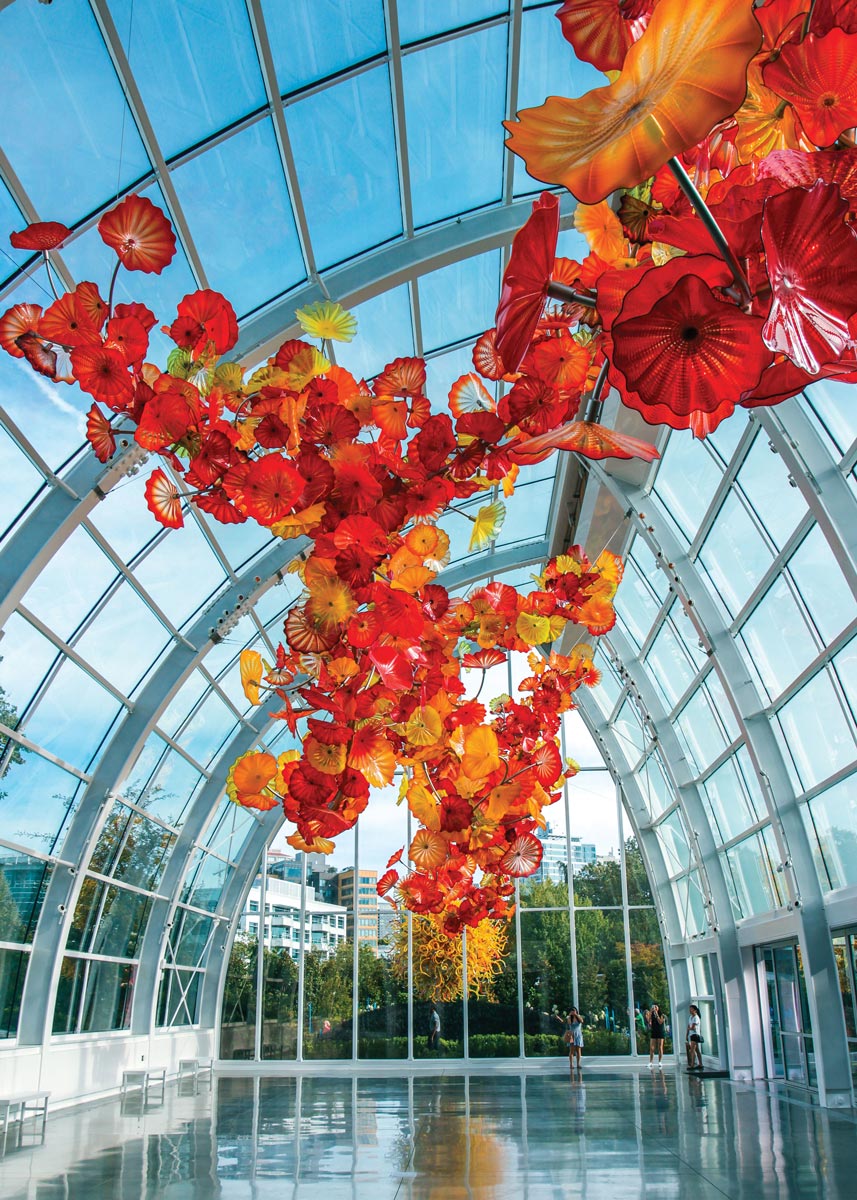Paths of Literature: Routes Inspired by Famous Authors and Works

Literary Landscapes and Their Impact
Literature possesses the remarkable ability to immerse readers into the minds and worlds crafted by authors. These creatives do not only script tales of distant lands or imagined realms; they are often deeply rooted in the unique environments of their own existence. Each stroke of the pen is influenced by the rich tapestry of experiences and surroundings that define their lives. From the charming streets of old New England to the vibrant landscapes of the American West, these diverse settings play a crucial role in shaping the narratives that captivate our hearts and minds.
What to Expect
This exploration takes you through physical and metaphorical pathways carved by literary giants, highlighting locations steeped in historical significance and artistic inspiration. Much like literature, these journeys promise adventure and enrichment. Join us as we explore:
- Notable Author Homes: Visit the very places where literary legends penned their masterpieces. For instance, the home of Emily Dickinson in Amherst, Massachusetts, provides a glimpse into the reclusive life of one of America’s greatest poets, offering both her private retreat and the expansive gardens that inspired her solitary musings.
- Famous Literary Locations: Sites such as the picturesque town of Concord, Massachusetts, inspired both Ralph Waldo Emerson and Henry David Thoreau, whose works reflect the transcendental beauty of nature. Taking a walk along the fields of Walden Pond can enhance your understanding of Thoreau’s philosophy as you breathe in the serenity of the area.
- Trail Maps: Utilize resources that guide you through the poignant landscapes of the literary world. The Literary Trail in Key West, Florida, not only showcases the homes of authors like Ernest Hemingway but also allows you to wander through the whimsical streets that fueled his creative spirit, creating an interactive experience of his life and work.
For both the devoted reader and the curious traveler, literature unfolds exciting routes to explore. Each step taken through these storied locations reveals the core of the authors’ experiences and inspirations, offering a rare opportunity to connect with their ghosts through places that shaped their craft. Prepare to embark on a journey that highlights the connection between place and prose, navigating through the fascinating realm of literature and uncovering stories that still resonate today.
It is within these literary trails that one can appreciate not only the beauty of nature and architecture but also the way these environments foster creativity and storytelling. By visiting these remarkable sites, you gain insights into the heart of American literature, enhancing your appreciation for the narratives and prose that have defined generations.
DIVE DEEPER: Click here for interactive adventures in iconic cities

Unveiling the Homes of Literary Legends
One of the most captivating aspects of exploring paths of literature is the opportunity to step into the homes of some of the most celebrated authors in history. These residences offer a unique lens into the lives and minds of the writers who transformed the literary landscape. Visiting these iconic locations allows one to appreciate not only the authors’ works but also the environments that shaped their stories.
The Influence of Place on Prose
For writers, the significance of their surroundings cannot be understated. The homes and habitats of famous authors provide context to their narratives and offer insights into the themes within their works. From the rustic settings that inspired timeless classics to the bustling urban environments that sparked groundbreaking literature, each location is a chapter in the authors’ lives. Below are a few notable author homes that serve as enlightening destinations for literary enthusiasts:
- Mark Twain House, Hartford, Connecticut: A visit to this Victorian mansion, where Mark Twain penned classics such as “The Adventures of Tom Sawyer” and “Adventures of Huckleberry Finn,” reveals the juxtaposition of the author’s humor and the serious undertones of social commentary present in his works. The house itself bursts with rich history, offering guided tours that evoke Twain’s playful yet reflective spirit.
- Louisa May Alcott’s Orchard House, Concord, Massachusetts: This quaint home is where Alcott wrote “Little Women,” capturing the essence of family dynamics and sisterhood in the context of 19th-century America. Touring the house provides insights into Alcott’s creative process, making it easy to see how her experiences influenced her poignant storytelling.
- Hemingway Home and Museum, Key West, Florida: Step into the abode of Ernest Hemingway, a man whose novels reflect both adventure and a struggle for meaning. The lush gardens and tranquil surroundings intricately weave into his narrative fabric, allowing visitors to perceive the world through Hemingway’s discerning eyes, whether through tales of “The Old Man and the Sea” or his explorations in “A Farewell to Arms.”
These residences not only house the artifacts and memories of the authors but also serve as strong>powerful symbols of inspiration. As you navigate through the rooms, you can almost hear the echoes of their thoughts and aspirations, making it a remarkable journey that blends nostalgia with admiration for their literary contributions.
Moreover, beyond the walls of these homes, the surrounding landscapes often reflect the themes present in the authors’ works. Nature, architecture, and local culture converge to create an immersive experience for visitors. As you walk through the gardens, libraries, or writing studios, the interplay between the physical space and the written word becomes palpable, offering an enriching perspective on the profound relationship between setting and storytelling.
| Category | Advantages |
|---|---|
| Cultural Enrichment | Exploring routes offers a deep dive into the cultural heritage associated with beloved literary figures, enhancing appreciation for their works. |
| Literary Experience | Traveling through scenic environments that inspired great literature can evoke emotional connections, allowing visitors to experience literature in a tangible way. |
| Educational Opportunities | Guided tours often include expert insights into an author’s life, the historical context of their work, and more, enriching the visitor’s understanding. |
| Community Connection | These routes often form a vibrant community of literature lovers, fostering discussions, events, and connections with like-minded individuals. |
Exploring the paths that inspired literary greats takes the reader beyond the written word; it transforms abstract concepts into experiential learning opportunities. By following these routes, one encounters the landscapes that nurtured iconic stories and character arcs, thereby enriching the overall appreciation for literature’s historical and cultural significance. From educational tours that offer deep dives into author biographies to the unique chance for community engagements, the “Paths of Literature” awaits to unveil a rich tapestry woven through time, making it essential for literary enthusiasts and curious travelers alike. Each journey holds the promise of discovering not just a place, but the very essence of storytelling shaped by renowned authors and their timeless works.
DISCOVER MORE: Click here for insights on integrating adventure and leisure
Exploring Literary Landscapes and Their Impact
The journeys undertaken by authors often weave as intricately through their narratives as the characters they create. Whether traversing mountains, sailing seas, or strolling through city streets, the settings in which authors found themselves played a significant role in shaping their literary output. These literary landscapes serve as reminders of the personal experiences that influenced timeless tales, and exploring these routes can deepen readers’ connections to the works.
Nature’s Role in Crafting Narratives
Many writers found inspiration amid the breathtaking vistas and serene environments surrounding them. The natural world has always held a significant place in literature, providing both backdrop and motivation for storytelling. For example, the Lake District in England deeply influenced William Wordsworth and other Romantic poets, who sought to capture the beauty and emotional resonance of nature in their works. The sweeping hills and tranquil lakes can still be explored today, encouraging visitors to reflect on the same elements that inspired some of poetry’s greatest expressions.
In the United States, the Hudson River Valley served as a canvas for the Hudson River School of artists and writers, including the transcendentalist, Ralph Waldo Emerson. Emerson’s celebrated essay, “Nature,” reflects his philosophical musings inspired by the region’s landscapes. A hike along the Hudson River’s scenic trails allows modern adventurers to witness firsthand the places that stirred feelings of “the sublime” within Emerson’s prose and ultimately influenced American thought and literature.
Urban Inspirations and Iconic Cityscapes
Conversely, urban environments have sparked literary movements in myriad ways. Cities like New York have long provided a vibrant backdrop for authors ranging from F. Scott Fitzgerald to Zadie Smith. The hustle and bustle of the city can be felt in Fitzgerald’s “The Great Gatsby,” where the glamour and decay of the Jazz Age unfold against the backdrop of 1920s Manhattan. Walking the streets of New York, visitors can immerse themselves in the energy that defined an era and fueled the imagination of countless writers.
Notable places like Harlem, with its jazz clubs and cultural revolution in the 1920s, formed the heart of the Harlem Renaissance, influencing writers like Langston Hughes and Claude McKay. A tour of the neighborhood unveils the vibrant history encapsulated in their works and the cultural resilience that continues to inspire artists today.
Literary Trails and Themed Routes
In addition to visiting specific landmarks and homes, dedicated literary trails have emerged to guide enthusiasts through various regions steeped in literary history. The Walt Whitman Trail in Camden, New Jersey, celebrates the life and work of the influential poet by highlighting key sites that influenced his writing. Similarly, the Virginia Literary Trail showcases a selection of famous writers from the region, including Edgar Allan Poe and William Faulkner, through well-documented sites in and around Richmond, Virginia. These curated trails not only provide opportunities for exploration but also highlight how diverse locations across America shaped the narratives woven into the fabric of its literature.
By tracing the steps of these literary giants through landscapes and cities alike, one does not merely partake in a historical exploration; they engage with the very essence of creativity. Every backdrop, whether rustic or urban, has the potential to inspire new stories, ensuring that the legacy of these authors continues to evolve along the routes they traveled.
DIVE DEEPER: Click here to uncover more tips
Conclusion: The Enduring Connection Between Authors and Their Environments
As we traverse the paths of literature, we unravel not only the stories that have captivated generations but also the profound impact of the authors’ environments on their craft. From the idyllic Lake District that shaped the poetry of William Wordsworth to the vibrant streets of New York City that defined the Jazz Age in the writings of F. Scott Fitzgerald, each location serves as a testament to the seamless intertwining of place and narrative. Observing these literary landscapes allows us to view the world through the authors’ eyes, providing a richer, more nuanced understanding of their works.
Literary trails and themed routes such as the Walt Whitman Trail and the Virginia Literary Trail not only celebrate the legacy of these writers but also invite contemporary readers to engage personally with the cultural and natural contexts that inspired them. These explorations serve as pathways not just into literature but also into the heart of human experience, revealing how creativity can blossom from various settings.
Thus, embarking on these literary journeys fosters a deeper appreciation for the power of place in storytelling. By stepping into the footprints of our literary giants, we not only honor their contributions but also open ourselves up to new inspirations. As we continue to seek out these routes inspired by famous authors and works, we ensure that their stories remain alive, evolving alongside our own narratives in a shared journey of creativity and discovery.

